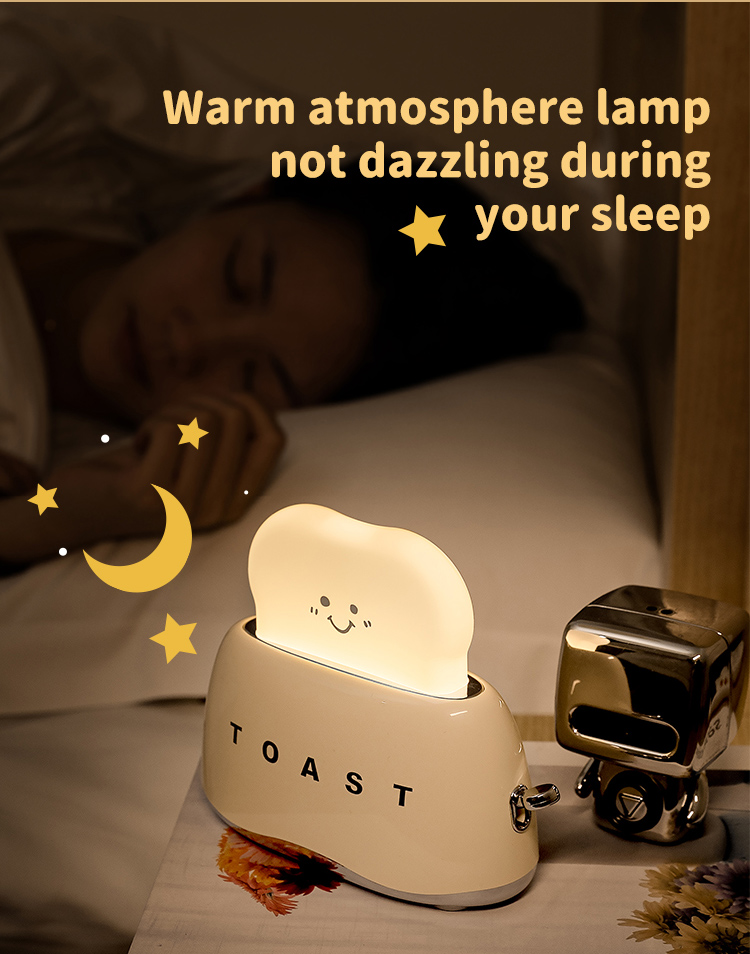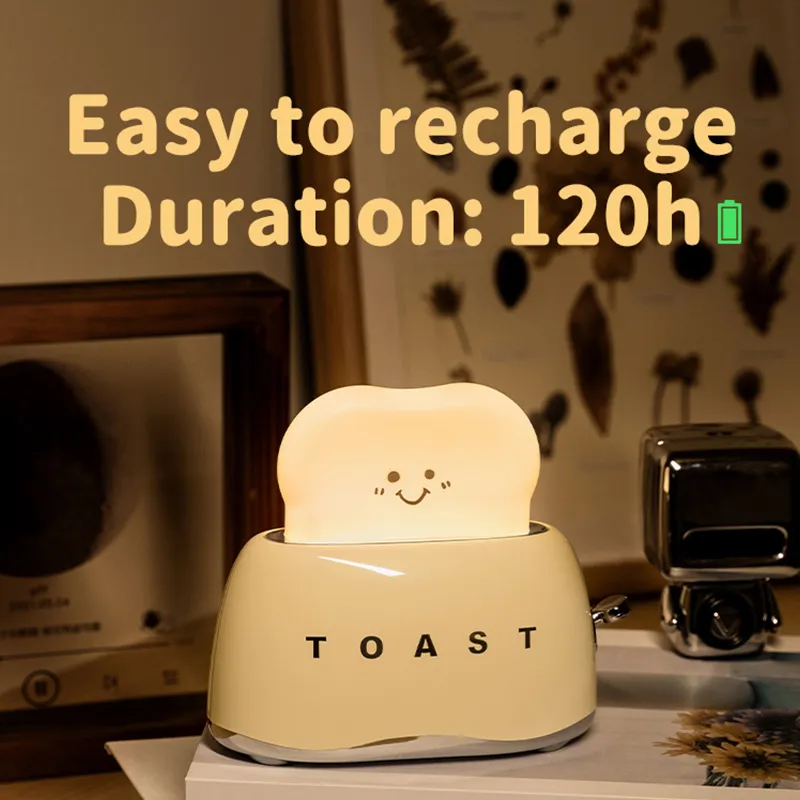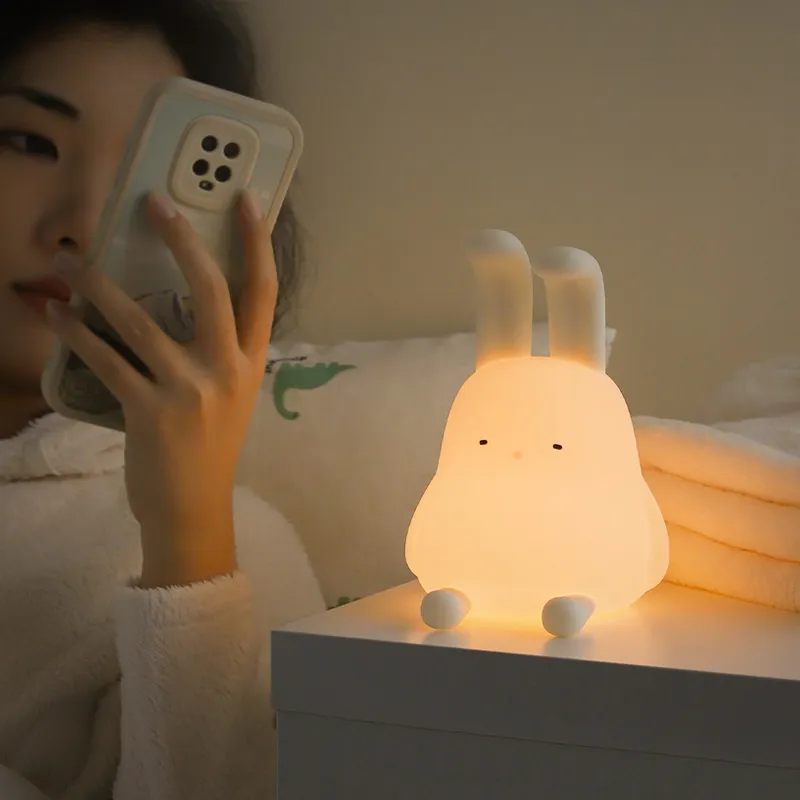How bright should a nursery night light be?
Whether feeding, changing diapers, or soothing a baby who wakes at night, an appropriate lighting environment is crucial. For this reason, a nursery night light has become an essential parenting aid for many parents.
Many new parents often wonder: How bright should a nursery night light be? What is the optimal lighting level? This not only affects the baby's sleep quality but also directly impacts their visual health and sense of security.
This article will delve into this question, focusing on aspects such as light intensity, color temperature, safety standards, and usage scenarios.

Why should the brightness of a nursery night light be controlled?
1. Avoid disrupting the baby's sleep
Infants' nervous systems are not fully developed and are particularly sensitive to light. Excessive light can irritate their eyes and make it difficult for them to enter a deep sleep. Prolonged exposure to bright light at night can also affect melatonin secretion, disrupting the baby's circadian rhythm. A moderate nursery night light brightness can provide convenient lighting while minimizing sleep disruption.
2. Protecting Infants' Eyesight
Infants' eyes are still developing, and prolonged exposure to bright light can irritate their retinas. Excessively bright nursery nightlights not only disrupt sleep but can also negatively impact visual health. Therefore, controlling nursery nightlight brightness is a crucial component of effective parenting.
3. Meeting Parents' Nighttime Care Needs
Nursery nightlights aren't just for infants. Parents need sufficient light to observe their surroundings during nighttime feedings and diaper changes. However, if the light is too dim, parents may not be able to clearly see their infant's condition; if it's too bright, it can disrupt their rest. Therefore, striking a proper balance in brightness is crucial.

How Bright Should a Nursery Nightlight Be?
To answer the question, "How Bright Should a Nursery Nightlight Be?" requires consideration of scientific measurement units and the actual needs of infants.
1. Illumination Standards (Lux)
• Standard household lighting: Living rooms or study rooms typically have 200-500 lux.
• Nightlighting in a baby's bedroom: 5-20 lux is recommended.
This brightness range satisfies parents' basic care needs without overstimulating the baby. In other words, the brightness of a nursery night light should approach the soft effect of moonlight.
2. Light Source Power (Watts)
When choosing a nursery night light, it's best not to choose a light source exceeding 3W. Too much power can easily produce excessive light, while too little may not be enough to clearly see the baby's condition. Typically, a low-power LED nursery night light of around 1W will meet these requirements.
3. Brightness Perception
In practice, parents can use "clear visibility of the baby's outline and basic movements in the nursery room without glaring" as a reference standard. This brightness level is generally the most suitable environment for babies.
Nursery Night Light: What is the Optimal Lighting?
Brightness is only one aspect of a nursery night light; another important consideration is the color temperature of the light.
1. Choosing Color Temperature
• Warm light with a color temperature of 2700K-3000K is most suitable.
• This warm yellow light is similar to candlelight or sunset light, providing a soft and warm glow that helps babies relax and fall asleep.
• In contrast, cool white light (above 5000K) or blue light can easily stimulate a baby's nervous system and disrupt sleep.
2. Light Uniformity
The optimal nursery night light should be soft and glare-free. Avoid direct exposure to the baby's eyes. Using a diffuser or light shield will provide a more even and comfortable light.
3. Light Direction
The optimal lighting is indirect. This means the nursery night light should be placed next to the baby's crib or in a corner of the room, allowing the light to reflect off walls or objects, creating a soft, soothing effect.
4. Actual Recommendations
• Brightness: 5-20 lx
• Power: 1-3W
• Color Temperature: 2700K-3000K
These are the parameters currently considered most suitable for nursery night lights for infant sleep and care.

Brightness Guidelines for Nursery Night Lights in Different Usage Scenarios
1. Feeding or Diaper Changing
When you need to clearly monitor your baby at night, you can adjust the brightness of the nursery night light to 15-20 lux, but keep it soft and avoid direct sunlight into the baby's eyes.
2. When Your Baby is Sleeping Alone
When your baby is already asleep, it's recommended to adjust the brightness of the nursery night light to 5-10 lux, providing only basic illumination to minimize disruption to deep sleep.
3. Nighttime Parental Checks
If you're only briefly entering your baby's room to check on them, keep the nursery night light on a low setting—enough to clearly monitor the baby without disrupting their sleep.
How to Determine If a Nursery Night Light is Too Bright?
You can determine this in the following ways:
1. Observe Your Baby's Reactions
If your baby frequently opens their eyes, becomes restless, or even turns their head away from the light, the nursery night light may be too bright.
2. Parents' Subjective Perception
If parents notice a noticeable glare or glare from the light source upon entering the room, then the brightness is too high and it's not suitable for a nursery night light.
3. Actual Lighting Range
A suitable nursery night light only needs to illuminate the area around the crib, not the entire room. If the light is too diffuse, the brightness will often be too high.
Tips for Choosing a Suitable Nursery Night Light
• Dimming Function: The best choice is a nursery night light with multiple dimming levels, allowing parents to flexibly adjust the brightness according to different usage scenarios.
• Light Source Material: LED light sources are recommended, as they have low energy consumption, generate little heat, and have a long lifespan, making them ideal for long-term use in a baby's room.
• Safety Design: Nursery night lights should avoid exposed power sources, and the lamp material should be environmentally friendly, drop-resistant, and scald-resistant to ensure a safe environment for babies.
• Convenient Operation: Nursery night lights should ideally have a simple on/off switch or touch control for quick and easy operation at night, avoiding delays in baby care.

How bright should a nursery night light be? What is the optimal light level?
• Brightness: Recommended: 5-20 lx, power no more than 3W, with soft light preferred.
• Color temperature: Warm light between 2700K and 3000K is optimal, avoiding cool white and blue light.
• Usage: Use indirect lighting to avoid direct sunlight into the baby's eyes. Brightness can be flexibly adjusted for various scenarios, such as feeding, rounds, and sleep.
In short, nursery night lights aren't about "brighter is better"; they need to be scientifically controlled within an appropriate range. Only when they have moderate brightness, a reasonable color temperature, and are safe and comfortable can they truly be effective, creating a good sleep environment for babies and facilitating nighttime care for parents.
Thus, the answer is clear: the optimal brightness for nursery night lights should be between 5-20 lx, with a warm color temperature between 2700K and 3000K. This is the scientific, safe, and professional standard for nursery lighting.
Can I get a customized LED lighting solution from Huari?
Absolutely. Huari Lighting provides complete OEM and ODM services for clients seeking branded lighting products. From industrial design to component sourcing and packaging, we tailor every detail according to your market’s needs. Buyers can request customized color temperatures, housing materials, or logo printing.
Our engineers assist with sample development, testing, and certification support. Customized manufacturing enables distributors and brand owners to differentiate their products while maintaining factory-level prices.
